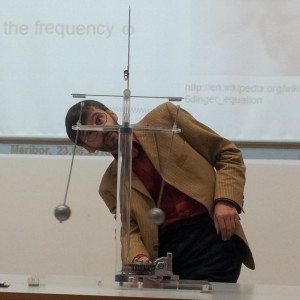What we can learn from a pendulum for pushing medical progress
Hermann Scharfetter | TU Graz
Science
| Innovation
The ageing society and demographic change is one of the major challenges which Europe is facing now, and even more so in the future. Mastering this challenge requires radically new diagnostic and therapeutic treatments as key factors in achieving the healthy well-being of European citizens. Important objectives in this context are the effective treatment or even prevention of chronic diseases with high socio-economic impact such as cancer, neurodegenerative diseases and metabolic disorders. Therefore the European Commission substantially supports research activities which should push forward public health and develop new medical approaches. In this context we have to bear in mind that medical progress has always been driven substantially by technology being pioneered by basic sciences, especially physics and chemistry. This talk will illustrate the tremendous impact of basic sciences onto human medicine, focussing on medical imaging and tracing the most recent developments in molecular and theranostic imaging. But in the spirit of ‘out of the box’ room shall also be given to some historical, epistemological and ethical considerations rather than just reporting scientific facts. What are the frequently uncommon and fascinating ways of thinking behind scientific theories. How can complex real-world problems be solved by transformation to and back from a highly abstract space of thinking? How can the proper use of bold metaphors and analogies become the source of technological innovation and of human well-being? Those and other questions should be addressed and hopefully lead to a vivid discussion.
Hermann Scharfetter
